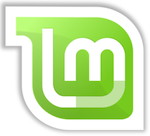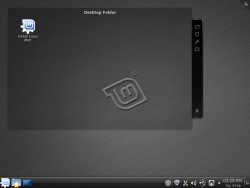Writing good posts and killer articles is the major part of a blogging business and good images and screenshots are a prerequisite for a good article.Often a need is felt for softwares and applications which would allow us to take screenshots with minimum effort. Here are some of the best standalone softwares,chrome and Mozilla plugins for webmasters and bloggers to take screenshots.
All free screenshot software’s capture the screen.But Screensnapr is different.This print screen software allows you to share your screenshots on twitter, Digg, Facebook, Reddit and more or saving it in your PC.The Built in URL shrinking makes quickly sharing links to your images effortless.The best feature of ScreenSnapr is custom servers service. One can use his own server to store his images if he feels the need for.
Snagit is undoubtedly one of the best software in the market for taking screenshots offering nearly every feature which could be made available.Snagit also offers batch converter which allows you to edit large number of files together at same time.It also has other useful features such as preview window, a webpage catalog maker, which allows you to quickly gather all of your screen captures and create a webpage in five simple steps.With large number of filters,customizations and wide-ranging capture methods , Snagit is ,hands down ,one of the top notched software available for taking screenshots.
Fireshot is a Firefox extension that allows you to take screenshots of the whole page or even only the visible part. With Fireshot,you also get several editing and annotation tools with which you can edit the pictures or even add text annotations to them. Fireshot’s advanced version i.e Fireshot Pro allows you to directly upload your screenshots to FlickR, Picasa, ImageShack and EasyCaptures. Fireshot Pro is also available for Chrome,Firefox,Thunderbird and safari. A drawback of this plugin is that its Pro version for free is only available for 30 days.Users have also reported that after sometime they were asked to buy and upgrade Fireshot or simply stop using it.
FullShot has tons of image editing options,impressive screenshot methods,excellent filters up its sleeve.It also lets you customize your print page so your screen capture prints out exactly the way you want.But it has some shortcomings too. To apply an effect, one has to go to tools,select an effect and then again take the screenshot.Resizing image also proves to be cumbersome.
Webpage Screenshot
A Chrome Plugin,Webpage Screenshot is a simple solution for you to capture the whole webpage and save it as an image.You can even resize the screenshot before capturing.But it lacks even basic image editing tools. As the name suggests, Easy Screen Capture 2 is an easy way to capture the screen.Though, it has easy navigating options and easy ways to capture screen, it lacks image editing tools.A unique feature of Easy Screen Capture 2 ,Suckertool is quite noteworthy.Suckertool can help you to match colors in an image.It possesses basic image editing tools but they too are not really satisfactory in terms of quality.Hence, Easy Screen Capture is a great software for small projects but lack high-quality special effects and certain editing tools.
PageShot is a simple utility for Chrome users which helps in taking screenshots of the whole window or only the visible part and even crop it.It is powered by JCrop ‘s visual crops selector.
If you don’t need super advanced features,then choose SPX Instant Capture at the first place. You can customize hotkeys easily and its highlighting and marking tools are of a quality less than none.It is easy and fun to use but does not supports video and game captures.
Picnik Extension for Chrome
![]() One of the famous online image editor,Picnik
One of the famous online image editor,Picnik has developed a dynamic Chrome extension for taking screenshots and downloading the images on any webpage. Just a mouse click and Picnik creates a snapshot of your currently viewed webpage and opens it in Picnik for easy editing, text annotations and sharing.
The above mentioned apps will surely help you all. Don’t forget to share your experiences with us.
Tip : You can even take screenshots without any plugin or software in easy two steps
1. Press PrintScreen button located at upper right corner of your keyboard.
2.Open paint and press Ctrl+V. Crop the required part of the image as per your need.
![]()




